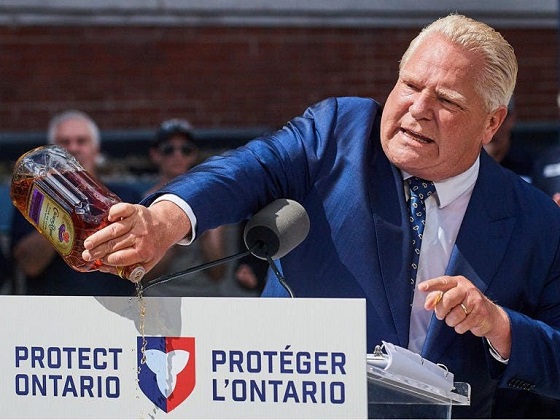Business
ESG doctrine and why it should not be adopted in professional organizations
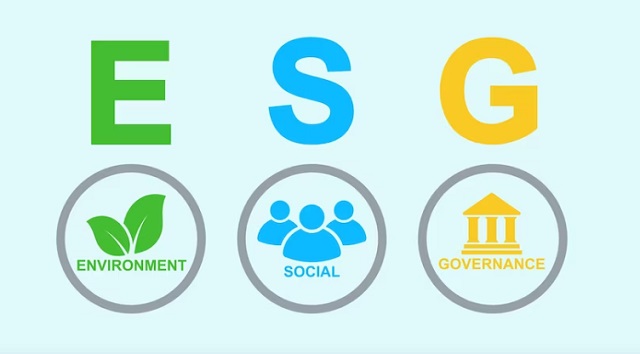
From the Frontier Centre for Public Policy
By Graham Lane | Ian Madsen
The following introductory comments by Ian Madsen, Senior Policy Analyst, Frontier Centre for Public Policy provide background on Graham Lane whose attached letter to CPA Manitoba strongly criticizes that organization’s embrace of ESG.
Graham Lane is a retired CA and has had a multifaceted professional career spanning almost 50 years in the public and private sectors of seven provinces as a Senior Executive and Consultant.
In the public sector, before concluding his career as the Chairman of the Manitoba Public Utility Board (PUB), he consulted for three provincial governments and was employed by four provinces. In Manitoba, he was the CEO of Credit Union Central, bringing in online banking, a Vice-President of Public Investments of Manitoba, the interim President of Manitoba Public Insurance (MPI), reorganizing the corporation after its massive losses of 1986, a Vice-President of the University of Winnipeg, and the CEO of the Workers Compensation Board, restructuring the insurer and returning it to solvency. His experience with Crown Corporations goes well beyond Manitoba, he was the Comptroller of Saskatchewan’s Crown Investments Corporation, and a consultant reviewing government auto insurance in BC and workers compensation in Nova Scotia. He received the gold medal in Philosophy as an undergraduate, and a Paul Harris Fellowship from Rotary International for excellence in vocational service. Throughout his career, and wherever he worked, consulted or volunteered, he maintained an external objectivity. In recent years the Frontier Centre for Public Policy has been honoured by his presence of the Centre’s Expert Advisory Panel where he has been able to share his extensive public and private sector operations knowledge.
Environmental, Social and Governance Standards, so-called ‘ESG’, and scoring arose from ‘Responsible Investing’ efforts in the 1970’s and 1980’s. Institutional and other investors sought to influence corporations that were seen to be involved in, first, the Vietnam War, and, later on, in conducting business in Apartheid-era South Africa. Since then, the movement has morphed, now evolved into ESG.
ESG is essentially a covert way of exerting control over public companies by means other than buying control in the stock market. It is a ‘so-called’ ‘Social Justice’ movement. It seeks to impose non-market ideology on publicly traded companies, such as ‘Green Energy’ and ‘Diversity, Equity and Inclusion’, or, ‘DEI’. The latter two are the main goals of the effort, and are divisive and destructive. There are three paths that this crusade takes: regulatory, professional, and institutional.
The regulatory one is to compel governments to require that ESG standards be applied. This can occur through regulatory agencies such as the Ontario Securities Commission, the most powerful such body in Canada, or through its sister regulatory bodies in other provinces and territories. Federal and provincial legislation can also be passed and implemented to force some or all ESG-related strictures upon corporations.
This institutional path exerts influence upon the largest investors in Canada: public pension plans, such as the Canada Pension Plan and its CPP Investment Board, Quebec’s Caisse de depot et placements, which does the same for enrolees in Quebec; the federal Public Service Pension Plan, Ontario Teachers; and other provincial and professional pension plan investment bodies. Many, if not all of them, to a greater or lesser extent, have already agreed to and endorse ESG ‘principles’, and now attempt to induce the companies they invest in to subscribe to those edicts.
The professional path is, perhaps, the most pernicious. ESG scoring and rating are akin to accounting and financial reporting and analysis, so the professional bodies responsible for those things, such as provincial and national accounting professionals associations, and national and international associations of financial analysts, such as the Chartered Financial Analysts Institute, have begun to adopt ESG regimens.
However, ESG scoring is not just harmful, it is wildly subjective and susceptible to inaccuracy. ESG evolved from Marxist notions of ‘equity’. It is aligned with collectivist, non-market ideology. Transferring much or most managerial decision-making to those with neither direct expertise nor responsibility for its consequences would be irresponsible, an attack on capitalism itself.
Informed and strong opposition, as in the following letter from 2023 by Graham Lane, to the President of the Manitoba office of the Chartered Professional Accounts, should be heeded if citizens, taxpayers, investors and society at large want to avoid the Canadian economy becoming dominated by and managed by ESG criteria. These diverge radically from traditional proven fiduciary and corporate stewardship standards and principles – in favour of ‘Social Justice’ approved outcomes – which potentially damage or destroy returns for pension plan members, and other indirect and direct investors and the economy as a whole.
Ian Madsen
Senior Policy Analyst
January 4, 2024
Text of letter begins below:
Graham Lane, CPA CA (retired)
xxx (address withheld)
Winnipeg, MB
Geeta Tucker, FCPA, FCMA
President and CEO
CPA Manitoba Office
1675 – One Lombard Place
Winnipeg, MB
R3B OX3
August 26, 2023
Re: ESG courses and accreditation, CPA – “A New Frontier: Sustainability and ESG for CPAs and business professionals” (CPA Canada Career and Professional Development)
Dear Ms. Geeta Tucker:
I recently read, with concern, that the association is offering ESG ‘training’, towards immersing members in validating the Environmental Social Governance – ESG’ -movement’. (“A New Frontier: Sustainability and ESG for CPAs and business professionals.”) I also note, with further concern, a supporting column published on the subject (July/August 2023 Pivot CPA magazine). Our profession and members should ‘think twice’ before ‘jumping in’.
“ESG” stands for environment, social and governance. ESG investors aim to buy the shares of companies that have demonstrated their willingness to improve their performance in these areas. ESG is an acronym that refers of environmental, social, and governance standards that socially conscious investors use to select investments. These criteria consider how well public companies safeguard the environment and the communities where it works, and how they ensure management and corporate governance met high standards. For many people, ESG investing is more than a three-acronym. It’s a practical, real-world process for addressing how a company serves all its stakeholders: workers, communities, customers, shareholders and the environment. ESG offers one strategy for aligning your investment with your values, it’s not the only approach.”
But, the ESG ‘movement’, originally driven by good intentions, has been co-opted by lobbyists, special interest groups, and various NGOs. Recent reviews have revealed ESG’s lackluster performance in creating meaningful environment change, and others have highlighted chronic abuse of flawed methodologies.
ESG has gradually suffused the business and finance world, from its origins in academia and the ‘activist’ movements of various ‘social justice’ interest groups. Now, through the actions of provincial and national CPA bodies, our profession is validating and endorsing the central tenets and precepts of ESG valuation, which is misguided and harmful. ESG is antithetical to the aims of the accounting profession, which is, in part, to give honest, objective and rigorous appraisal of the assets, liabilities, and the profit and cash generating capacity of firms. Risk factors and externalities, including environmental issues, are already covered by GAAP and IFRS standards in financial reporting.
While the proponents of ESG promote it as a means of providing a fuller perspective on important aspects of a firm’s place in society, its community, and the ecosystem, and of its handling of other ‘stakeholders’, who are neither shareholders nor managers of a firm, it does not. In fact, by dubiously evaluating those other aspects of a firm’s status, it badly serves investors by creating possibly devastating conflicts and contradictions. This could imperil a firm and its ability to act autonomously towards providing goods and services to the public, jobs to its employees, and dividends (or capital gains) to its owners (ultimately, the public).
The problem of ESG evaluation and its ‘scoring’ are well-known. There is a lack of consistent standards and objectivity, including those of quantitative metrics that are logical and germane. ESG’s principles are dedicated to diverting and subverting top management; i.e., by substituting other ‘stakeholder’ concerns or aims from those of the firm – which is, principally, to seek short-term and long-term profitability and viability, subject to the constraints of laws, regulations, and physical limitations.
It is important to recall that ESG’s origins were in social activism, with the ‘S’ linked to anti-Apartheid movements on university campus and shareholders’ meetings in the 1980’s and ‘90’s. Then the ‘S’ was ‘Responsible Investing’ – an attempt to isolate and boycott the then-racist regime in South Africa. Then, by bringing the-apartheid regime to the negotiating table, with representatives of the disenfranchised opposition, eventually, it brought to an end to Apartheid itself.
Efforts should continue to draw attention to ‘conflict diamonds’, and minerals being extracted by indentured children and adults in the Democratic Republic of the Congo, along with the continuing oppression of minority groups in regions of China. For these situations, and, other places around the world where there are violent or corrupt regimes, western companies should be careful as to their dealings. Yet, these problems are generally already noted as business risks in proper, professional, corporate reporting, and are also subject to the law and multilateral guidelines and sanctions.
The ‘Environmental’ component of ESG is, perhaps, the primary one that the anti-capitalist movement have been most preoccupied with. It, the movement, accepts entirely, and bases its ideology on, presumptions that are not, despite media rhetoric, accurate. It is not true that global temperatures that are unadjusted or otherwise manipulated by un-objective persons are rising.
Nor is rising temperatures are ‘entirely’ due to higher levels of greenhouse gases in the atmosphere. The level of greenhouse gases in the atmosphere is not the most important factor in the direction, or magnitude, of any warming temperatures that might occur. Nor do any of some vaunted climate models predict (at least with any degree of certainty) what temperatures will be anywhere on the planet, let alone on average. Such efforts have repeatedly provided false projections.
Media and academic pundits have cited heat waves, or other events, as evidence of the tangible effects of purported warming, but these have been anecdotal and ignored other events, with contradictory evidence in other regions. Past predictions of ice cap and glacier melting, desertification, and more and stronger storms and other dire events, have yet come to naught.
Another fraught part of the ‘E’ in ESG scoring is determining ‘Scope 1, 2 and 3’ GHG emissions. The first one, ‘Scope 1’, is not ‘terribly difficult’ to do, but the other two Scopes 2 and 3, need to delve into what suppliers, customers and others do with the goods or services of the subject firm. These would be extremely difficult to determine let alone accurately quantify – and can be very expensive and/or unreliable to even attempt to calculate. At best, such tests might also give a distorted impression of an environmental impact – even ‘damage’ ’ that the firm may, or may not be, imparting.
Finally, the whole ‘Green Transition’ has become a rent-seeking lobby, attempting to capture government and its tax dollars. Their proponents’ supposition of touted ‘benefits’ of solar panels, wind turbines, electric vehicles and batteries – drastically altering or decimating the conventional energy, transportation and agriculture industries – are often erroneous or fraudulent, ignoring the full costs, financial and environmental, of their proposals.
The ’G’, ‘Governance’, part of ESG is also elusive and amorphous. While some of it has to do with the accountability of upper management, that is already covered by the responsibility of the Compensation, Nomination and Succession committees of the Boards of Directors (of all but the smallest companies), and also by regulations and supervision of applicable provincial Securities Commissions. Any malfeasance by managers or other employees, or by governments or other overseas organizations, involving bribery or other crimes, is covered by laws already. Engagement with ‘less-than-perfect’ regimes overseas is unavoidable for some industries, and it is unlikely that any quantitative scoring of such interactions or presence would or could be validly determined.
Another aim of the ESG effort is to compel companies to commit to some form of DEI: ‘Diversity, Equity and Inclusion’.
In practice, DEI cannot merely be about outreach to historically disadvantaged or under-represented communities, but cqn lead to active discrimination against employees or potential hires who are not members of those communities. Commitment to hiring and promotion goals in those communities is legally questionable, but that is almost the least of the problems DEI entails. One of the worst is about the engagement of DEI directors, or outside DEI consultants, to conduct divisive and stressful DEI training, such as sensitivity and ‘microaggression’ awareness and role-playing exercises.
ESG scoring that rewards destructive efforts would or could make companies and organizations alter their operation to appear to ‘earn’ higher scores, while actually damaging their ability to foster a productive work environment, retain qualified staff, generate an adequate rate of return on invested capital, or survive as a going concern.
Another element of the ‘G’ in ESG is to try to inject parties other than shareholders or management into Governance, diluting shareholders’ control – which could or would obscure responsibility and accountability, and could badly delay or derail important capital allocation and other corporate decisions. These groups are suppliers, customers, those affected by the operations or products or services of the company, and communities in which the company operates, and potentially others. A covert attempt to subvert capitalism itself, and the market economy, might happen.
ESG advocates have engendered support by claiming that higher-ESG rated firms, and the shares in those firms, perform better than the ‘typical’ company. However, that is untrue. Studies of Canadian and American ESG and ‘Ethical’ funds (over the past five, ten, and even longer time periods) indicate that they underperform index funds; i.e., funds that invest in the entire market of large firms traded on a stock exchange.
Any funds that claim otherwise are consciously, or unconsciously investing in a style tilted to certain sectors; quite often the low-environmental impact IT sector. Such companies can perform well in a shorter time frame. When examining ESG funds, moreover, it often turns out that they invest in most of the same companies as the index funds – though perhaps with a higher management fee. Also, they could have peculiar criteria for higher ESG ratings, most glaringly rating some oil companies higher than other apparently ‘Green’ ones, such as Tesla. Elimination of low-ESG rated firms from investing can concentrate risk by narrowing diversification, thus violating a central, crucial tenet of investment risk management.
ESG has gained considerable support from corporate interests, including prominent institutional investors such as Blackrock (Chairman, Larry Fink) and public pension funds. While such ‘responsible investing’ may have a glowing aura, it can also have a pernicious effect of trying to coerce corporate management to attain public policy that ‘progressive’ politicians, academics, think tanks and other operatives believe are paramount. Those goals can supersede the shareholder returns that are vital to guarantee beneficiaries of pension funds and other institutional investment portfolios receive their promised benefits. This could violate the fiduciary duty of investment portfolio managers, which is to strive for the best risk-adjusted return that they can. (Several ‘green energy’ companies’ share prices have declined, some drastically in the past year.)
Several state governments in the United States have prohibited ESG-based investment.The Saskatchewan and Alberta provincial governments may also intercede if this ‘movement’ strikes at the vital energy industry.
Giving the considerable reputational power of CPAs, for the Association to ‘educate’ its members in a potentially destructive endeavour, such as ESG evaluation, is a mistake. It would be folly to add yet more risk and damage by validating and promoting ESG.
ESG advocates are now on the defensive, from information available recounted herein. Shouldn’t our profession review its decision to promote ESG?
Yours Sincerely,
Graham Lane, CPA CA (retired)
Former Chairman, Manitoba’s Public Utilities Board
c.c. Pamela Steer, CEO, President and CEO, CPA, Canada
Paul Ferris, Editor, Pivot, CPA Canada
Business
Pulling back the curtain on the Carney government’s first budget
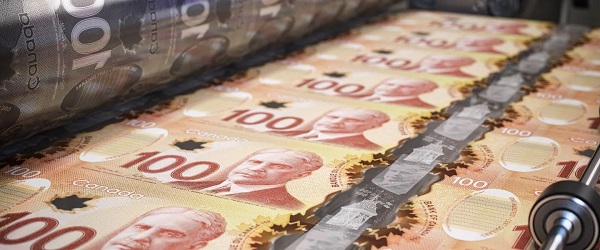
From the Fraser Institute
By Jake Fuss and Grady Munro
The Carney government will spend more, run larger deficits and accumulate more debt than was previously planned by the Trudeau government.
In the 1939 film the Wizard of Oz, Dorothy and her companions travel to the Emerald City to meet the famous Wizard of Oz who will solve all their problems. When first entering the Wizard’s chambers, the group sees a giant ghostly head that meets their expectations of the “Great and Powerful Oz.” However, later on in the film (much to their disappointment) we learn that the Wizard is nothing more than an ordinary man operating a machine behind a curtain.
Canadians might feel a similar kind of disappointment about the Carney government’s first budget tabled on Tuesday. Prime Minister Carney promised a “very different approach” than that of his predecessor regarding Ottawa’s finances, and at first glance the budget appears to be this new approach. But when you pull back the curtain, it’s simply an escalation of the same failed fiscal policies Canadians have suffered for the last decade.
For context, the Trudeau government’s approach to government finances was record-high levels of spending, persistent deficits and massive debt accumulation. The Trudeau government created a fiscal mess, and as a “responsible fiscal manager” the Carney government has promised to clean it up.
To that end, the Carney government now separates spending into two categories: “operating spending” and “capital investment.” Capital investment includes any spending or tax expenditure (e.g. tax credits and deductions) that contribute to the production of an asset (e.g. infrastructure, machinery or equipment). Operating spending includes everything else, and is supposed to represent “day-to-day” government spending.
The government plans to balance the “operating budget”—meaning it will match operating spending to revenue—by 2028/29, while leaving capital investments to be financed through borrowing. Importantly, when calculating the operating balance, the government counts revenues that are foregone due to tax expenditures that are considered to be capital investments.
To help find the savings needed to balance its operating budget by 2028/29, the government initiated a “Comprehensive Expenditure Review” this past summer—the budget reveals the review’s results. Part of the review included a long overdue reduction in the size of the federal public service, as the government will cut 16,000 positions this year, and reach a total reduction of almost 40,000 by 2028/29 compared to levels seen two years ago. As a result of this spending review, the budget projects spending in 2028/29 will be $12.8 billion lower than it otherwise would have been.
This is the fiscal picture the Carney government is focusing on, and the one it undoubtedly wants Canadians to focus on, too. When taken at face value, balancing the operating budget, initiating a spending review, cutting the federal bureaucracy, and focusing on greater investment would certainly appear to be a different approach than the Trudeau government—which made no meaningful effort to balance the budget or restrain spending during its tenure, grew the bureaucracy, and allowed business investment to collapse under its watch.
But here’s the problem. When you pull back the curtain, all the rhetoric and accounting changes are just a way to obscure the fact the Carney government will spend more, run larger deficits and accumulate more debt than was previously planned by the Trudeau government.
Both operating spending and capital investment (which represents either additional spending or foregone revenue) impact the bottom line, and by separating the two the Carney government is simply obscuring the true state of Ottawa’s finances. If we ignore the government’s sleight of hand and instead compare total government spending against the revenues that are actually collected, the true size of the budget deficit this year is expected to equal $78.3 billion. Not only is that considerably more than the “operating” deficit the government is focusing on, it’s also nearly double the $42.2 billion deficit that was originally planned by the Trudeau government.
The story is similar for years to come. While the Carney government claims it will balance the operating budget by 2028/29, the overall deficit will be $57.9 billion that year. Over the four years from 2025/26 to 2028/29, overall deficits under the Carney government will equal a combined $265.1 billion. In comparison, the Trudeau government had only planned to run deficits equaling a combined $131.4 billion during those same four years—meaning the Carney government plans to borrow more than twice as much as the Trudeau government.
Driving this increase in borrowing is a combination of lower revenues and higher spending. From 2025/26 to 2028/29, the Carney government expects to collect $70.5 billion fewer revenues than the Trudeau government had previously projected. This difference likely comes down to a combination of the economic impact of U.S. tariffs along with various tax measures implemented by the Carney government that lower revenues (including cancelling a proposed increase to capital gains taxes and cutting the bottom federal personal income tax rate).
On the flip side, the Carney government plans to spend $63.4 billion more in total than the Trudeau government due to the introduction of considerable new spending commitments (notably on defence and housing), and the expectation of higher interest payments on its debt. The reality that spending is only set to rise under the Carney government stands in stark contrast to the prime minister’s rhetoric regarding “austerity” and the “ambitious savings” found by the government’s so-called spending review.
Higher spending and larger deficits will help grow the mountain of federal debt. By 2028/29, the Trudeau government had originally projected that total government debt would reach $2.6 trillion—which, based on the budget forecasts, would represent 72.2 per cent of the overall economy. The Carney government’s fiscal plan now puts total federal debt at $2.8 trillion by 2028/29, or 78.6 per cent of the overall economy. For perspective, the last time total federal debt pushed 80 per cent of the economy was during the 1990s when Canada teetered on the brink of a fiscal crisis.
Finally, the government’s approach to spending and the deficit doesn’t seem to be in line with what Canadians wanted to see from this budget. A poll conducted prior to the budget showed that 69 per cent of respondents felt it’s important for the government to balance the budget, compared to just 27 per cent who supported continued deficit spending. In fact, three out of five respondents felt that too much government spending has contributed to the rising cost of living and inflation—the issue they’re most concerned about.
Like a certain Wizard, Prime Minister Carney has made grand promises to fix many of the serious problems facing Canada. At first glance, the Carney government’s first budget may appear to deliver a new plan that will get federal finances back in order. Just pay no attention to the man behind the curtain.
Business
Capital Flight Signals No Confidence In Carney’s Agenda

From the Frontier Centre for Public Policy
By Jay Goldberg
Between bad trade calls and looming deficits, Canada is driving money out just when it needs it most
Canadians voted for relative continuity in April, but investors voted with their wallets, moving $124 billion out of the country.
According to the National Bank, Canadian investors purchased approximately $124 billion in American securities between February and July of this year. At the same time, foreign investment in Canada dropped sharply, leaving the country with a serious hole in its capital base.
As Warren Lovely of National Bank put it, “with non-resident investors aloof and Canadians adding foreign assets, the country has suffered a major capital drain”—one he called “unprecedented.”
Why is this happening?
One reason is trade. Canada adopted one of the most aggressive responses to U.S. President Donald Trump’s tariff agenda. Former prime minister Justin Trudeau imposed retaliatory tariffs on the United States and escalated tensions further by targeting goods covered under the Canada–United States–Mexico Agreement (CUSMA), something even the Trump administration avoided.
The result was punishing. Washington slapped a 35 per cent tariff on non-CUSMA Canadian goods, far higher than the 25 per cent rate applied to Mexico. That made Canadian exports less competitive and unattractive to U.S. consumers. The effects rippled through industries like autos, agriculture and steel, sectors that rely heavily on access to U.S. markets. Canadian producers suddenly found themselves priced out, and investors took note.
Recognizing the damage, Prime Minister Mark Carney rolled back all retaliatory tariffs on CUSMA-covered goods this summer in hopes of cooling tensions. Yet the 35 per cent tariff on non-CUSMA Canadian exports remains, among the highest the U.S. applies to any trading partner.
Investors saw the writing on the wall. They understood Trudeau’s strategy had soured relations with Trump and that, given Canada’s reliance on U.S. trade, the United States would inevitably come out on top. Parking capital in U.S. securities looked far safer than betting on Canada’s economy under a government playing a weak hand.
The trade story alone explains much of the exodus, but fiscal policy is another concern. Interim Parliamentary Budget Officer Jason Jacques recently called Ottawa’s approach “stupefying” and warned that Canada risks a 1990s-style fiscal crisis if spending isn’t brought under control. During the 1990s, ballooning deficits forced deep program cuts and painful tax hikes. Interest rates soared, Canada’s debt was downgraded and Ottawa nearly lost control of its finances. Investors are seeing warning signs that history could repeat itself.
After months of delay, Canadians finally saw a federal budget on Nov. 4. Jacques had already projected a deficit of $68.5 billion when he warned the outlook was “unsustainable.” National Bank now suggests the shortfall could exceed $100 billion. And that doesn’t include Carney’s campaign promises, such as higher defence spending, which could add tens of billions more.
Deficits of that scale matter. They can drive up borrowing costs, leave less room for social spending and undermine confidence in the country’s long-term fiscal stability. For investors managing pensions, RRSPs or business portfolios, Canada’s balance sheet now looks shaky compared to a U.S. economy offering both scale and relative stability.
Add in high taxes, heavy regulation and interprovincial trade barriers, and the picture grows bleaker. Despite decades of promises, barriers between provinces still make it difficult for Canadian businesses to trade freely within their own country. From differing trucking regulations to restrictions on alcohol distribution, these long-standing inefficiencies eat away at productivity. When combined with federal tax and regulatory burdens, the environment for growth becomes even more hostile.
The Carney government needs to take this unprecedented capital drain seriously. Investors are not acting on a whim. They are responding to structural problems—ill-advised trade actions, runaway federal spending and persistent barriers to growth—that Ottawa has yet to fix.
In the short term, that means striking a deal with Washington to lower tariffs and restore confidence that Canada can maintain stable access to U.S. markets. It also means resisting the urge to spend Canada into deeper deficits when warning lights are already flashing red. Over the long term, Ottawa must finally tackle high taxes, cut red tape and eliminate the bureaucratic obstacles that stand in the way of economic growth.
Capital has choices. Right now, it is voting with its feet, and with its dollars, and heading south. If Canada wants that capital to come home, the government will have to earn it back.
Jay Goldberg is a fellow with the Frontier Centre for Public Policy.
-

 Business2 days ago
Business2 days agoTrump’s Tariffs Have Not Caused Economy To Collapse
-

 Daily Caller2 days ago
Daily Caller2 days agoTrump Reportedly Planning Ground Troops, Drone Strikes On Cartels In Mexico
-

 Alberta1 day ago
Alberta1 day agoAlberta government’s plan will improve access to MRIs and CT scans
-

 Addictions2 days ago
Addictions2 days agoThe War on Commonsense Nicotine Regulation
-

 Censorship Industrial Complex2 days ago
Censorship Industrial Complex2 days agoPro-freedom group warns Liberal bill could secretly cut off Canadians’ internet access
-

 Brownstone Institute2 days ago
Brownstone Institute2 days agoBizarre Decisions about Nicotine Pouches Lead to the Wrong Products on Shelves
-
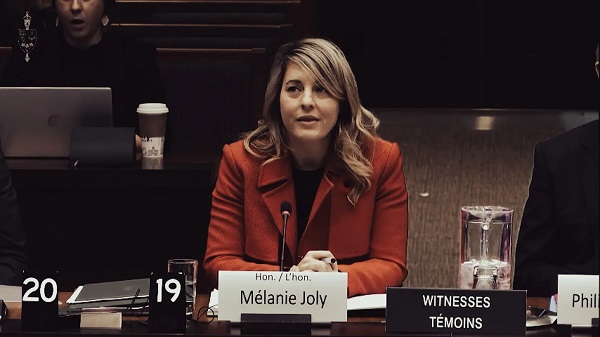
 Business1 day ago
Business1 day agoNo Jobs Clause: Liberals Under Fire Over Stellantis Deal in Fiery Committee Showdown
-
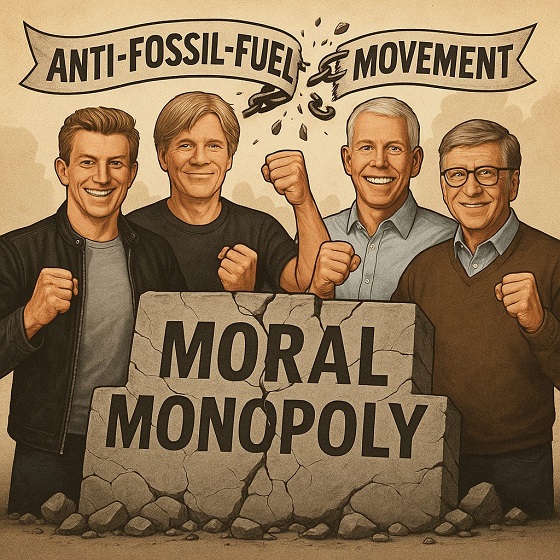
 Economy1 day ago
Economy1 day agoWelcome to the Energy Humanist Club! Bill Gates breaks the moral monopoly against fossil fuels








